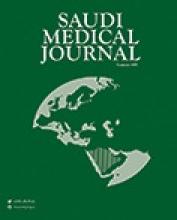Abstract
OBJECTIVE: The present study determines the degree of ossification of the posterior atlanto-occipital membrane in dry bone, plane lateral cervical spine radiographs and computer tomography (CT). The average length, width and the area of the arcuate foramen were measured on dry bone and on cervical CT. Further, age, gender and complaints of the patients of shoulder and arm pain, neck pain, headache, vertigo, and lacrimation in relation to the presence of bony complete or incomplete arcuate foramen were evaluated.
METHODS: From February 2004 to January 2005 60 dry atlases were obtained from the Anatomy Department, University of Marmara, Istanbul, Turkey and 416 lateral cervical spine radiographs were obtained from the Radiology department for neurological and orthopedic evaluations. Each complete arcuate foramen was calculated with the aid of Clemex Vision PE demo version computer program.
RESULTS: Among the 60 dry atlases examined 7 (11.7%) had complete and 2 (3.3 %) had incomplete bony bridge formation. Of the 416 plane lateral cervical spine radiographs examined, 30 (7.2%) had complete and 26 (6.25%) had incomplete bony bridge formation. Of the 30 complete arcuate foramen 24 (80%) were females and 6 (20%) were males. The frequency of having a complete arcuate foramen in females was 8.45%, and in males it was 4.55%. Further, of the 26 incomplete arcuate foramen 20 (76.9%) were females and 6 (23.1%) were males. The frequency of having an incomplete arcuate foramen in females was 7%, and in males was 4.55%. The statistical evaluations showed that patients with complete arcuate foramen had significant complaints of shoulder-arm pain (p=0.0072), neck pain (p=0.0072) and vertigo (p=0.0598) compared to patients with incomplete arcuate foramen. The patients with complete arcuate foramen had a headache ratio of 12:30 and this ratio was 2:26 in patients with incomplete arcuate foramen and the difference between complete and incomplete arcuate foramen was statistically significant (p=0.0062). Further, no statistically significant relation was observed between both complete and incomplete arcuate foramen and lacrimation. No relationship between age and the presence of complete and incomplete arcuate foramen was observed.
CONCLUSION: Presence of an arcuate foramen is always underestimated. Its presence should always be keep in mind in patients complaining of shoulder-arm and neck pain, headache and vertigo are examined.
- Copyright: © Saudi Medical Journal
This is an open-access article distributed under the terms of the Creative Commons Attribution-Noncommercial-Share Alike 3.0 Unported, which permits unrestricted use, distribution, and reproduction in any medium, provided the original work is properly cited.






